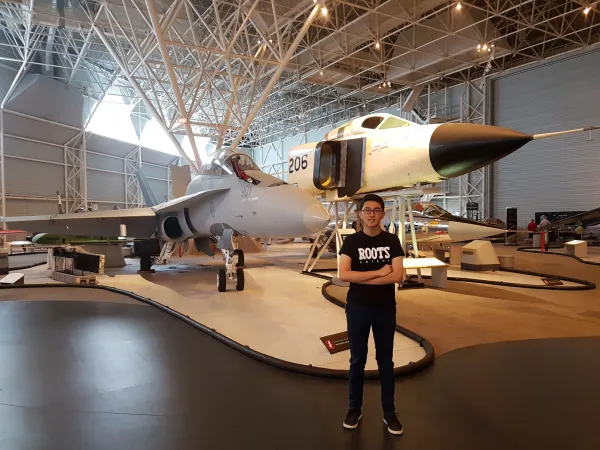Project Log #1: Getting Started
Working in an environment that’s full of airplanes has been my dream since childhood. So, when I learned that a summer internship at the Canada Aviation and Space Museum was a possibility, I jumped at the chance.
For the next 4 weeks, I’ll be working with the museum’s science advisor, Jesse Rogerson. My friend Mohamed, who was an intern at the museum last year, told me a lot about the personal weather station project that he completed, which made me even more excited to start the internship and start my own cool project. Jesse and I chatted about possible projects prior to the start of the internship. We came up with some very interesting ideas but in the end, we settled on making a model aircraft that can be used to explain how pilots control aircraft.
Since I am an aviation nerd, I already have some knowledge on how this is done. Pilots are able to control the aircraft with moving parts on the aircraft called control surfaces. Through the movement of these control surfaces, the direction of the plane is affected. Currently, the museum offers a Cessna 150 demonstration, where the guides explain how the control surfaces work in an interactive way. However, it’s hard to see the movement of the control surface when you’re sitting in the cockpit during the demo. So it would be very helpful to have a hands-on model with moveable control surfaces, to assist in explaining how control surfaces work.

Cessna 150, Demonstration plane for control surfaces
The most common control surfaces are the aileron, elevator, rudder, flaps and spoilers (aka air brakes). People who have flown on a commercial aircraft have likely seen aileron, flaps, and speed breaks in action, since they are on the airplane wing and can be seen from the windowed seats. The elevator and rudder are installed on the back of the plane, which makes them impossible to see in action.

Looking out the back window of the Cessna 150, rudder and elevator in view
Now that we’ve determined the focus of my project, I can start to research more about the theories behind control surfaces and brainstorm about the model plane’s design. That will be followed by designing and making the model, testing it, and iterating on the design after that. Stay tuned for my next entry!









![A block of photographs showing some of the people involved in the bombing of beluga whales in the estuary and gulf of the St. Lawrence River. Anon., “La chasse aux marsouins [sic]. » Le Devoir, 15 August 1929, 6.](/sites/default/files/styles/thumbnail_7/public/2024-09/Le%20Devoir%2015%20aout%201929%20page%206.jpg?h=584f1d27&itok=TppdLItg)






